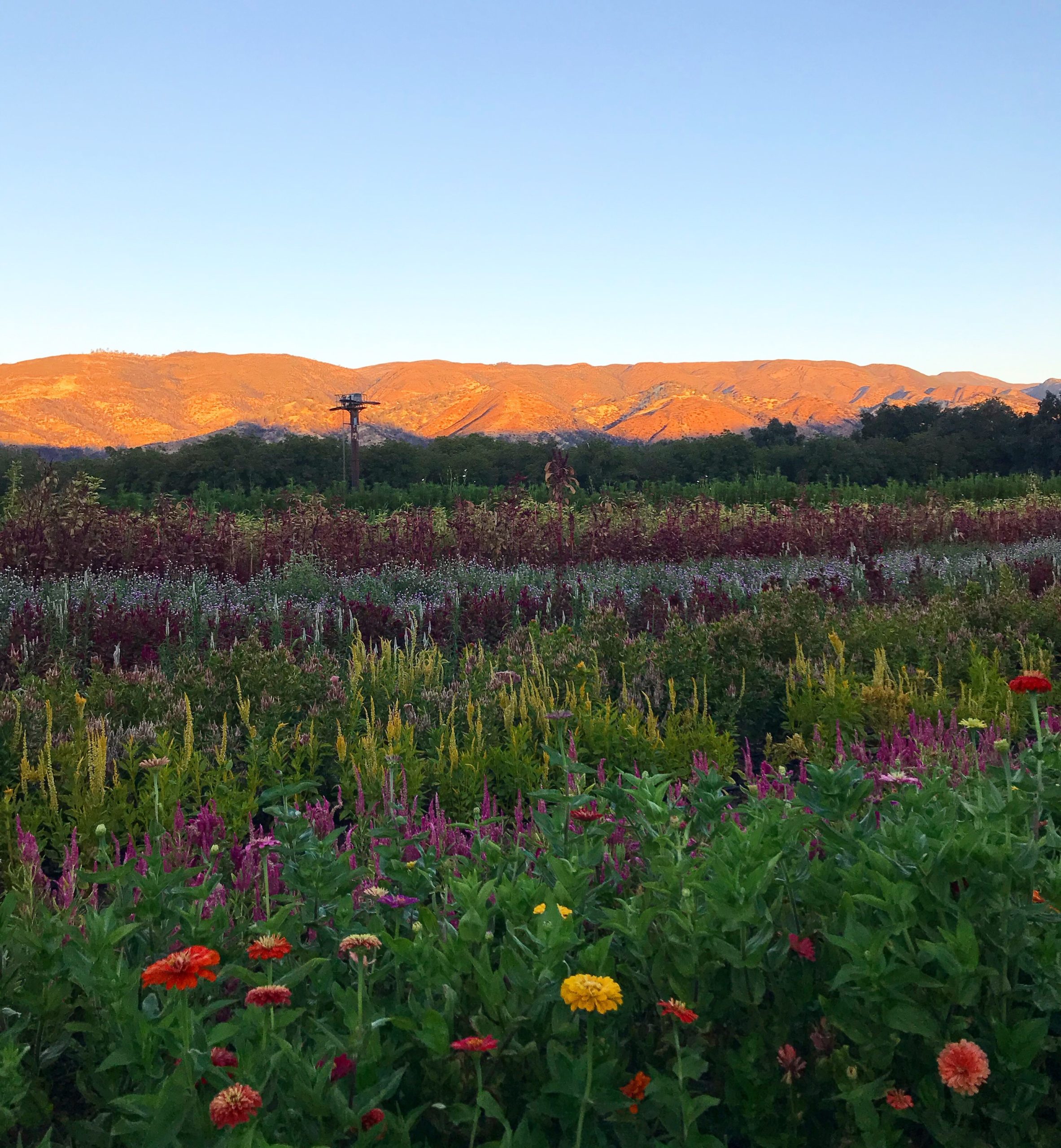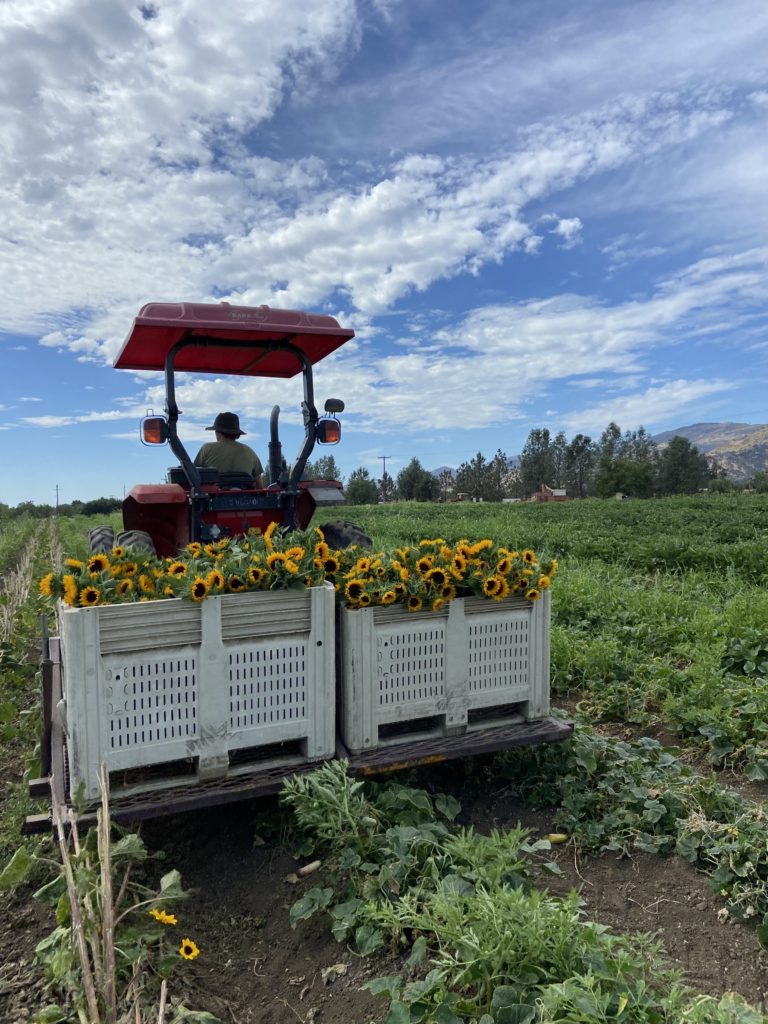
The song “Old MacDonald” covers the sounds that farm animals make, but what about us humans? We do most of our communication with the outside world via email and phone, but on the farm, it’s either face-to-face or over the radio. Face-to-face looks like it would at any workplace except instead of heading to someone’s desk, you’re likely heading out to the field, or to someone’s station in the shop or the kitchen. We also have “all staff meetings” most Friday mornings, a rare time when everyone is in one place at one time. It’s a great opportunity to share announcements with everyone, and we also do a group stretch, usually led by Andrew, followed by brincas (jumping jacks) before starting the day. But most of the time on most days, people are spread out from the hub of activity around the shop and the office to a few miles up the road in Rumsey. We have poor cell reception, so the radios get a lot of use for quick questions, check-ins, and updates. All chatter over the radio is broadcast to every radio, so everyone can hear what’s going on, whether they want to or not.It’s quite the chorus of voices and communication styles and it took me a little bit to learn who was who, as well as the various nicknames people use, but now is something I don’t need to think about.
Harder than figuring out who is talking is feeling confident I understand the message. The language of the farm is definitely Spanglish, though much further on the Spanish spectrum than English. English is my first language and I took Spanish in school from 6th through 12th grade with some excellent teachers, plus a few quarters at UC Davis. In school they never teach you agriculture vocabulary or many other everyday phrases, to say nothing of slang, idioms, and different regional dialects and my Spanish had gotten rusty when I started at the farm. While my grammar is still pretty atrocious, my vocabulary has gotten better, a combination of listening and then looking up words, asking, and other times by making mistakes. I got some pretty weird looks when I asked a few people about castañas (chestnuts) instead of canastas (baskets) until someone set me straight. I have been gently informed that a baseball hat is a cachucha or gorra, not a sombrero, and laughed at when I used “boligrafo” for pen like I was taught in school. Apparently that’s an antiquated term that no one uses anymore; it’s “pluma.” I didn’t know that calabaza is used both for summer squash and winter squash, resulting in a few moments of confusion. And then there are some vocabulary words that at least on our farm, we use the same in both language: Tokyo turnips (or Hakurei turnips) are “tokyos”, basil is “basil,” and cherry tomatoes are “cherries.”
We currently have folks at the farm who speak only English, Japanese and English, English and Spanish, and just Spanish, and probably a few other languages as well and we somehow make it work.
Now it’s your turn to test your vocabulary, or to learn a few words. See if you can match the Spanish and English produce words. There are no tricks, each word only has one answer and the answers are at the bottom!
|
1) ajo 2) berenjena 3) betebel 4) cebolla 5) chabacano 6) ciruela 7) durazno 8) ejote 9) elote 10) higo 11) lechuga 12) naranja 13) papa 14) pepino 15) perejil 16) repollo 17) sandia 18) zanahoria |
A) apricot B) beet C) cabbage D) carrot E) cucumber F) corn G) eggplant H) fig I) garlic J) green bean K) lettuce L) onion M) orange N) parsley O) peach P) plum Q) potato R) watermelon |
Also: check us out in the New York Times! They wrote an article (available here) about farms holding events and they included a quote from Amon and a few pictures from the August farm dinner.
– Elaine Swiedler, CSA Manager

Answers:
1I, 2G, 3B, 4L, 5A, 6P, 7O, 8J, 9F, 10H, 11K, 12M, 13Q, 14E, 15N, 16C, 17R, 18D
